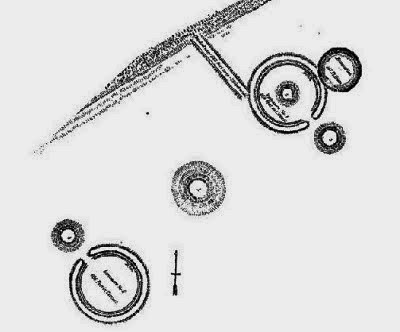Were the Mormon Tablets Actually Found in a West Virginia Giant's Burial Mound
Copper tablets were found near a burial mound that contained a giant skeleton in West Virginia. The tablets eventually make their way to Joseph Smith where they become the Book of Mormon.
Discovering
the Tablet
Now
and Long Ago, 1969
“During
this interview she told Heck that a man named Solomon
Spaulding, who said he was a preacher who came here in the summer of
1812, from Amity Village in Washington County, Pennsylvania.
Mrs.
Shearer said that Spaulding was more interested in Indian relics than
in religion, and spent most of his time at Hoults, (West Virginia)
across the river, digging around the old Indian road there, and
places where Indian graves used to be.. She said he lived
with the Heck family the first time he was here, "then left and
came again," and this time lived over the river with the Hoults.
She said that some people said, afterwards, that the last
time he was here he dug up some copper plates down by Pricketts
Creek, "and there was some matter of queer writing on the plates
that nobody could read.".....She heard, and it turned out that
the copper plates were stolen from preacher Spaulding by somebody and
turned over to Joseph Mormon, and it was those plates that he (Joseph
Smith) started the Mormon religion.”
Giant Skeletons Unearthed Near the Road and Fort
Mrs Shearer told Adam O Heck that schoolmaster John Beall settled here a very long time ago, and she remembered him clearly, and that when he first came here to live he found four human skeletons where Palatine is now, that - people supposed - had been washed from their graves by floods, their graves being near the river. She said she had heard that these skeletons were, every one, eight feet long.
“A
note found among the papers of Rev. Levi Shinn, founder of
Shinnstown, informs that Rev Spaulding told him that he had unearthed
an ancient manuscript on the Hoult property, just below the mouth of
the Tygart Valley River, where the "ancient people"
thousands of years ago had constructed three mounds and built a fort.
Through his knowledge of hieroglyphs he had deciphered it.
"Rev.
Spaulding resolved to publish it under the name of
"The Maunscript Found," and actually entered into
a contract with a Mr. Patterson of Pittsburgh, to publish the same,
but for some reason the contract was not fulfilled. The
manuscript remained in the possession of Mr. Patterson between
two and three years before Rev. Spaulding reclaimed and recovered
it."
In
the meantime a journeyman printer by the name of Sidney Rigden
copied the whole manuscript, and hearing of Joseph Smith Jr.'s
digging operations for money through the instrumentality of
necromancy, resolved in his own mind that he would turn this
wonderful manuscript to good account and make it profitable to
himself. An interview takes place between Rigdon and Smith,
terms agreed upon, the whole manuscript undergoes a partial revision,
and in the process of time, [becomes] the Golden Bible, or Book of
Mormon.
A
letter from Joseph Miller, Sr., the intimate and confidential friend
of Rev. Solomon Spaulding, which was originally published thirty-one
years since, or in 1839..."
These
witnesses stated that it was their belief "that Joseph Smith
had, by some means, got possession of Rev. Spaulding's manuscript,
and possibly made some changes to it, and called it the Book of
Mormon.
At
this point I find Joseph Smith irrelevant. What is important is that
there is good evidence that tablets were found. Could it be true? In
the Book of Nephi it says “Jesus Christ came down from heaven and
stood among the people. They were afraid to speak because they did
not understand what was happening. They thought Jesus was an angel.”
The
Book of Mormon notes the Nephi as an initially righteous people who
eventually "had fallen into a state of unbelief and awful
wickedness"and were destroyed by the Lamanites c. AD 385. This
reminds me of the Israelite and Moses coming to the promised land,
but being delayed in Genesis 15:16, “But in the fourth generation
they shall come hither again: for the iniquity of the Amorites is
not
yet full.” Did Christ redeem the accounted giants in the Bible,
known as the Amorites after they fled to North America? Did God wipe
them out in North America, just as he did in Israel for their
iniquities?

























